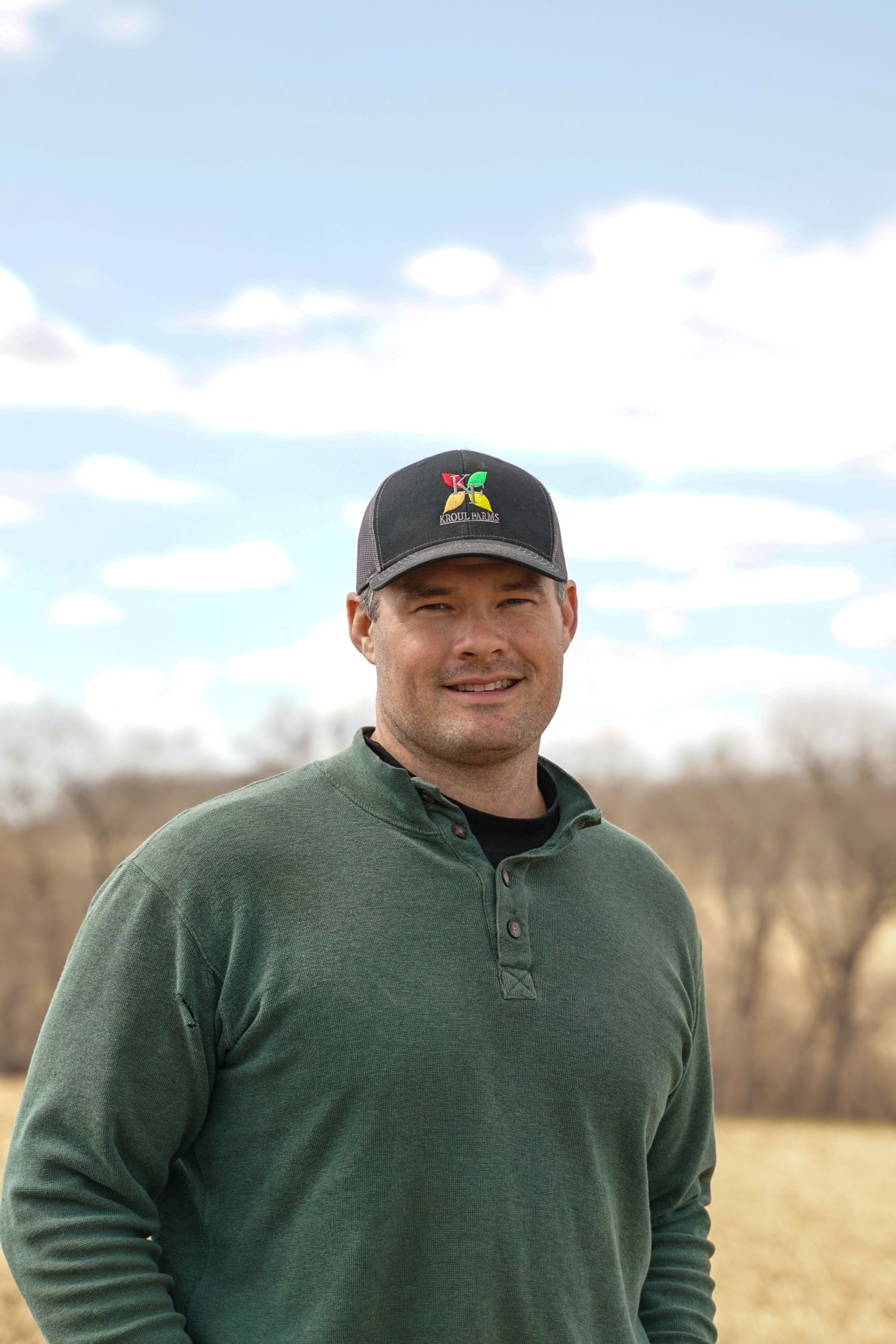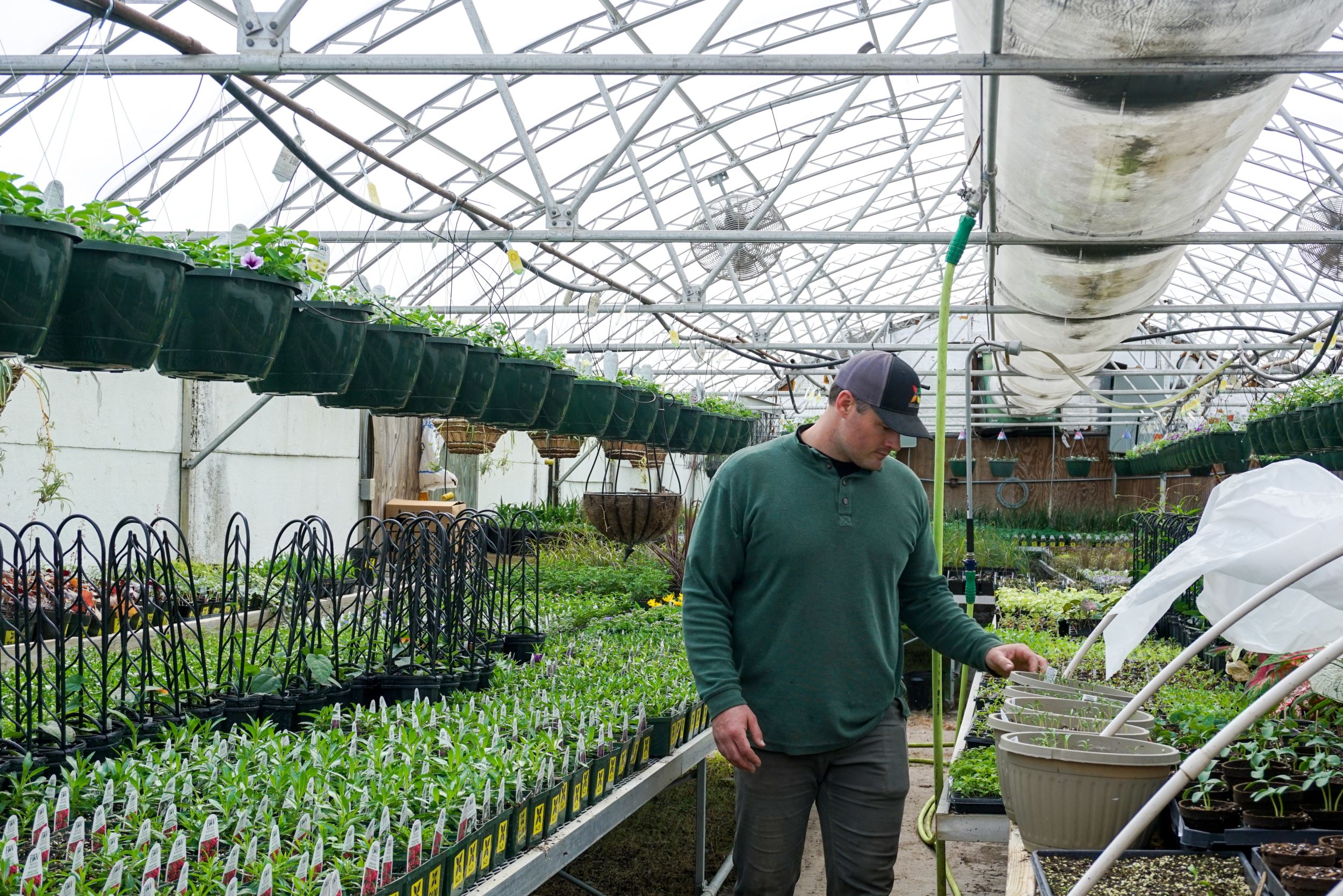Home Field Advantage
By Carole Teator on June 15, 2020 in Blog
Kroul Farms is a well-known landmark along Highway 1 in eastern Iowa. Midway between Mount Vernon and Solon not far from Iowa City, the farm, its market and garden center are a destination for those looking for bedding plants in the spring, fresh vegetables in the summer, pumpkins in the fall and firewood in the winter.
The Kroul name is familiar to passersby for other reasons, too. University of Iowa football fans know Matt Kroul thanks to his stand-out career as a defensive lineman for the Hawkeyes from 2004 to 2008. In the years since, he spent several seasons on the offensive line for the New York Jets, was inducted into the Iowa High School Football Hall of Fame, and has been featured in several publications as an outstanding athlete who returned home to leave his mark on fields of another kind.
Matt joined his parents, John and Kaylene, on the family farm in 2012 when he and his wife Nicole decided to return to Iowa to put down roots. Recently, Matt’s brother Adam also returned to farm full-time, and Matt’s cousin Kyle is yet another important member of this family farm operation. Together, they are continuing the farming tradition of generations of Krouls before them, some of whom have owned these very acres along the Cedar River since the 1860s.
Land that has been in the family for so many years makes Matt and his family think about those who will follow them.
“We try and manage the land, timber and water to ensure future generations can have the same opportunities we have had,” Matt said. “You also want to build a solid business so that future generations can view agriculture as a viable option for them moving forward.”
Protecting farmland and habitat
In 2018, Matt and Nicole added 145 acres to the family’s farming operation when they bought a neighboring farm from Larry and Sue Koehrsen and their family.
The Koehrsens and two of their children and their spouses had owned their farm since the late 1980s. It was a place where they could work together on weekends to restore the land and spend time in nature as a family. Larry recalls many happy spring days spent planting and caring for nearly 30,000 trees. The family also restored several acres of native grasses and wildflowers on the property, and rented some of the acres for crop production.
When it came time to sell their farm, the Koehrsens wanted to ensure that the land they had taken care of for so many years would not be subdivided for residential development, an increasing pressure in this active real estate market between Cedar Rapids and Iowa City.
Larry called Iowa Natural Heritage Foundation (INHF) to discuss their options for protecting their land. Ultimately, the family decided to place a conservation easement on the property.
“We decided that a conservation easement was the gold standard of the protection options we discussed,” Larry recalled. “And INHF is the gold standard of organizations to administer the easement.”
Protection, flexibility and financial planning
Larry, Sue and their children worked with INHF Conservation Easement Director Erin Van Waus to craft language that would protect the land they had nurtured for so many years while at the same time allowing a future owner as much flexibility as possible. Longtime neighbors of the Krouls, the Koehrsens hoped those future owners would be Matt and Nicole, who they had preliminary conversations with about the land.
The neighbors stayed in touch with each other as the Koehrsens worked through the land protection process with Van Waus. Once the Koehrsens were comfortable with the terms of the easement, Van Waus reviewed the terms with Matt and his father. They had questions about a few of the requirements, which she was able to clarify. In a few cases, Van Waus was able to suggest alternative language to the Koehrsens based on the Krouls’ questions. These conversations allowed both families to realize their shared vision for protecting the land while also farming it sustainably.
The Koehrsens signed the conservation easement in the fall of 2017. They donated the easement to INHF, which is responsible for protecting the land in perpetuity. As such, staff will visit the land annually to monitor the easement. Landowners are invited to and often accompany staff on these visits, which offer a nice opportunity for landowners and staff to connect, ask questions and share insights about the land.
For the Koehrsens and for many landowners, the peace of mind they feel knowing their land is forever protected is priceless. Additionally, when landowners donate a conservation easement to a qualifying conservation group, the landowner may also qualify for tax benefits based on the difference between the land’s appraised value before and after completing the conservation easement.
“Generally speaking, conservation easements reduce the fair market value of land, which may in turn reduce the selling price for a property,” said Van Waus. “But that reduction in value very often is offset to some degree by a reduction in the income tax obligation for the landowner who places the easement.”
Planting new family roots
A few months after the conservation easement was signed, the Koehrsens sold the land to Matt and Nicole. The young couple were able to purchase the farm thanks to the USDA Farm Service Agency’s “Beginning Farmer” loan program and because the conservation easement had reduced the land’s fair market value enough to put the farm within reach.
Holding nearly 200 conservation easements across Iowa, INHF has witnessed how this type of easement can be a powerful tool for those interested in protecting and transitioning ownership of agricultural or conservation land, particularly in areas experiencing high development pressure.
“Conservation easements can ease land transitions,” Van Waus said. “Whether the transition is to heirs or to a future buyer who shares a landowner’s interest in protecting the land for the benefit of wildlife, water quality, agriculture or open space.”
To Matt, the conservation easement provides him comfort knowing that his family, which now includes three children under the age of six, will enjoy the land in years to come.
“It gives me a little sense of peace that the land will forever be open green space,” he said.
The Koehrsens enjoy that another family will have the opportunity to wander among the trees they planted on those happy spring days many years ago.